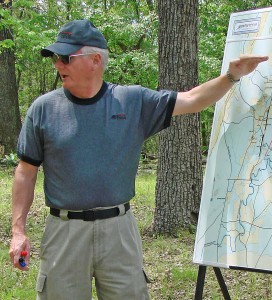
A true staff ride rests on preliminary background study of a battle or campaign before stepping foot onto the field itself. We provide carefully selected materials – such as maps and biographical and personality information on significant leaders – to get you started. Armed with a basic understanding, you’re more than a casual observer – you’re primed to comprehend an event on a number of different levels and better retain what you learn.
Next, the field becomes the laboratory where lessons are truly revealed. When you walk over contested ground, you draw closer to understanding the human dimension of war. You can see how weather and terrain weighed into commanders’ decisions – or how they each shot carefully laid plans to bits. Trudging up a hill, you can appreciate the challenges of maintaining unit cohesion. Even seeing the roads once used to convey thousands of men helps you appreciate how much time and space it takes to move an army, including its food and ammunition.
Expert field guides stress things like decision making at all levels – tactical and strategic. They explore the human foibles that sometimes determine outcomes. They make the fog and friction of war come alive – imparting lessons that aren’t soon forgotten.
Here’s a small window into what participants can expect on one segment of one day of Parker Hills’ June 20-23 field study of Union General Winfield Scott Hancock at Gettysburg:
“Hancock literally saved the day of July 2 at Gettysburg, and July 3 was no different. We will walk the lines of the II Corps on Cemetery Ridge and discuss the action. We will see the site where Gibbon is wounded and see Lieutenant Stephen Brown charge into the fray armed with only a camp hatchet. We will see Lieutenant Alonzo Cushing go down, and we will discuss Brigadier General Lewis Armistead’s brief penetration of the Union line….”
